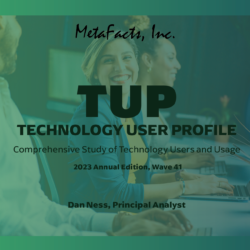The workforce has shifted strongly following the onset of the pandemic, affected by remote working, seesawing employer and national responses, and economic reverberations. In the US, there has been a persistent and noticeable shift from full-time or part-time employment to self-employed or gig working. Among the countries surveyed, Germany has the smallest share of online adults in the labor force.
This MetaFAQs reports on the percentage of online adults employed (full-time or part-time) and those in the labor force (employed, self-employed, or currently unemployed). The data from 2017 through 2023 is split by country: US, Germany, UK, and Japan. Report [TUP_doc_2024_0324_empt] in TUP Lenses: User Profile; Households

